-
 Bitcoin
Bitcoin $83,324.3682
-0.96% -
 Ethereum
Ethereum $1,818.1316
-2.08% -
 Tether USDt
Tether USDt $0.9999
0.00% -
 XRP
XRP $2.0459
-1.77% -
 BNB
BNB $602.9670
0.61% -
 Solana
Solana $118.6811
-4.36% -
 USDC
USDC $1.0000
-0.01% -
 Dogecoin
Dogecoin $0.1647
-2.29% -
 Cardano
Cardano $0.6489
-2.70% -
 TRON
TRON $0.2354
-0.80% -
 Toncoin
Toncoin $3.7675
-5.81% -
 UNUS SED LEO
UNUS SED LEO $9.4264
0.19% -
 Chainlink
Chainlink $12.9734
-3.40% -
 Stellar
Stellar $0.2619
-1.17% -
 Avalanche
Avalanche $18.3750
-2.81% -
 Sui
Sui $2.3033
-0.83% -
 Shiba Inu
Shiba Inu $0.0...01223
0.28% -
 Hedera
Hedera $0.1629
-0.49% -
 Litecoin
Litecoin $83.8176
2.52% -
 Polkadot
Polkadot $4.0062
-0.84% -
 MANTRA
MANTRA $6.3682
2.59% -
 Bitcoin Cash
Bitcoin Cash $304.3215
-0.10% -
 Bitget Token
Bitget Token $4.5315
-0.92% -
 Dai
Dai $1.0001
0.00% -
 Ethena USDe
Ethena USDe $0.9998
0.00% -
 Pi
Pi $0.6280
-8.11% -
 Hyperliquid
Hyperliquid $11.9038
-8.61% -
 Monero
Monero $214.1930
-0.70% -
 Uniswap
Uniswap $5.9929
-0.74% -
 Aptos
Aptos $5.2227
-0.74%
What is the impermanent loss risk of DeFi ETFs? How to avoid it?
DeFi ETFs face the potential risk of impermanent loss due to price divergence between underlying assets, which can be influenced by correlation, volatility, and asset composition.
Jan 08, 2025 at 06:36 am
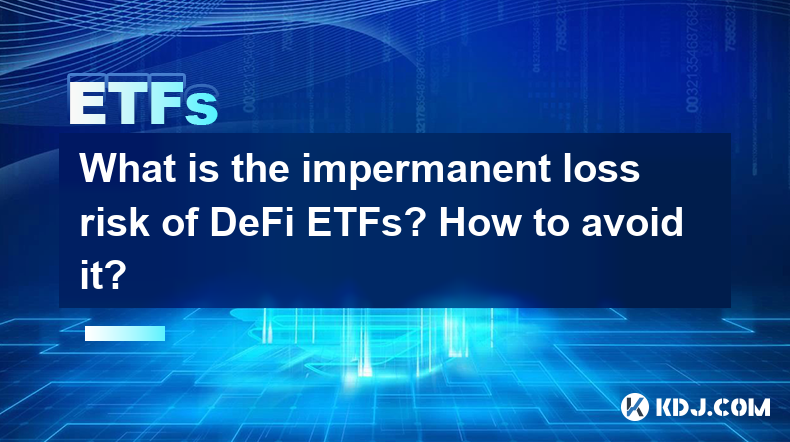
Key Points
- Understanding Impermanent Loss
- Factors Influencing Impermanent Loss
- Strategies to Minimize Impermanent Loss
- Avoiding Impermanent Loss Through Stable Pools
- Hedging and Rebalancing Techniques
- Assessing Liquidity Risk and Market Volatility
- Implementing Risk Management Protocols
What is the Impermanent Loss Risk of DeFi ETFs?
Impermanent loss is a unique risk associated with decentralized finance (DeFi) ETFs that occurs when the prices of the underlying assets in the ETF diverge significantly from their prices at the time of minting. This divergence arises when liquidity providers (LPs) deposit assets into a liquidity pool, creating an ETF-like structure, and the value of the deposited assets fluctuates. Unlike traditional ETFs, DeFi ETFs do not use authorized participants to manage the fund's composition, leading to the potential for impermanent loss.
When the value of one asset in the ETF increases while the other decreases, the ETF's price may not fully reflect the change in value of the underlying assets combined. In such a scenario, LPs may experience impermanent loss if they withdraw their assets prematurely, as the realized value of their assets may be lower than the original value deposited.
Factors Influencing Impermanent Loss
Several factors influence the magnitude of impermanent loss in DeFi ETFs:
- Correlation between underlying assets: When the assets in the ETF are strongly correlated, meaning they tend to move in the same direction, impermanent loss is typically lower.
- Volatility of underlying assets: Higher volatility in the underlying assets leads to greater price divergence and potential impermanent loss.
- ETF composition: The ratio and number of assets in the ETF can affect impermanent loss. ETFs with a higher number of assets tend to have lower impermanent loss, as fluctuations in any single asset have a меньший impact.
- Time period: Impermanent loss is typically realized when LPs withdraw their assets from the ETF. The longer the timeframe, the higher the likelihood of experiencing impermanent loss.
Strategies to Minimize Impermanent Loss
To mitigate the risks associated with impermanent loss, LPs can adopt various strategies:
- Choosing stable pools: Opting for DeFi ETFs backed by stablecoins with low volatility, such as DAI, USDC, or USDT, reduces the risk of significant price divergence.
- Hedging: LPs can hedge their exposure by investing in derivative instruments that offset potential losses, such as options or futures contracts.
- Rebalancing: Adjusting the composition of the ETF by buying or selling assets can help reduce impermanent loss. Rebalancing involves selling the asset that has increased in value and buying the asset that has decreased in value, thereby maintaining the desired asset ratio.
Avoiding Impermanent Loss Through Stable Pools
Stable pools are DeFi ETFs specifically designed to minimize impermanent loss. These pools consist of two or more stablecoins, such as USDC and DAI, which have similar values and low volatility. By investing in stable pools, LPs can significantly reduce the risk of impermanent loss while still earning potential returns through yield farming.
Hedging and Rebalancing Techniques
Hedging can be an effective strategy to mitigate impermanent loss. LPs can purchase put options that give them the right to sell an asset at a specified price. In a falling market, the put options provide protection by offsetting potential losses. Rebalancing, as mentioned earlier, involves adjusting the composition of the ETF by selling the asset that has increased in value and buying the asset that has decreased in value. Regular rebalancing helps minimize impermanent loss and maintain the desired asset allocation.
Assessing Liquidity Risk and Market Volatility
Liquidity risk refers to the ease with which an asset can be traded without significantly impacting its price. In the context of DeFi ETFs, liquidity risk is important to consider because assets may not be easily sold during periods of market stress or low liquidity. Assessing liquidity risk involves considering the size and depth of the market for the ETF and its underlying assets. Market volatility measures the extent to which prices fluctuate. Higher market volatility increases the risk of impermanent loss because it increases the likelihood of significant price divergence.
Implementing Risk Management Protocols
Implementing risk management protocols is crucial for DeFi ETF providers and LPs. These protocols should include:
- Establishing clear guidelines on how the ETF will be managed, including asset allocation, rebalancing strategies, and hedging techniques.
- Monitoring market conditions and assessing the potential for impermanent loss on an ongoing basis.
- Communicating transparently with investors about the risks associated with the ETF and any measures taken to manage these risks.
FAQs
Q: Can impermanent loss be completely avoided?
A: While it is not always possible to eliminate impermanent loss entirely, adopting strategies such as investing in stable pools, hedging, and rebalancing can significantly mitigate the risks.
Q: How do I calculate impermanent loss?
A: Impermanent loss can be calculated using the formula: (Value of assets if held outside the ETF - Value of ETF shares) / Value of assets if held outside the ETF.
Q: What are the benefits of investing in DeFi ETFs?
A: DeFi ETFs offer potential returns through yield farming and may provide exposure to a diversified portfolio of assets.
Q: Are DeFi ETFs suitable for all investors?
A: DeFi ETFs are complex investment vehicles suitable for experienced investors who understand the risks involved, including impermanent loss.
Disclaimer:info@kdj.com
The information provided is not trading advice. kdj.com does not assume any responsibility for any investments made based on the information provided in this article. Cryptocurrencies are highly volatile and it is highly recommended that you invest with caution after thorough research!
If you believe that the content used on this website infringes your copyright, please contact us immediately (info@kdj.com) and we will delete it promptly.
- FDUSD, BTC, TUSD, SEI, and LINK are the top 5 virtual asset-related keywords attracting the most interest
- 2025-04-03 15:45:12
- Bitcoin Pepe (BPEP) could hit $250 in four years
- 2025-04-03 15:45:12
- TAO Breaks Resistance, HYPE Dips 14%— Yet BlockDAG PullS in $210M Following Keynote 3 Launch!
- 2025-04-03 15:40:13
- Dogecoin (DOGE) Price Prediction: An Analyst Highlights a Bullish Divergence, Suggesting a Rally Could Be in the Cards
- 2025-04-03 15:40:13
- XRP Navigates Volatile Waters, Targeting a Breakout From Its Range
- 2025-04-03 15:35:27
- Meme Cryptocurrency Dogecoin DOGE/USD Falls After President Donald Trump's Tariff Shock, Extending Weekly Losses to Over 16%
- 2025-04-03 15:35:27
Related knowledge
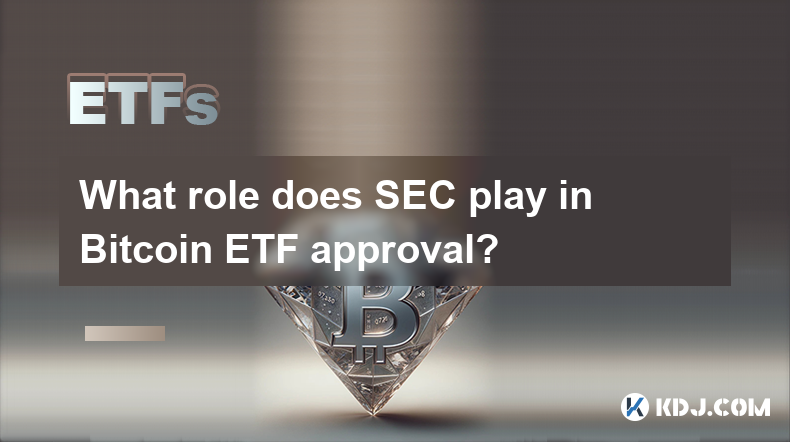
What role does SEC play in Bitcoin ETF approval?
Feb 25,2025 at 06:48am
Key Points:SEC's Role in Bitcoin ETF Approval ProcessHistorical Efforts to Establish a Bitcoin ETFSEC's Criteria for Bitcoin ETF ApprovalPotential Impact of a Bitcoin ETF on the Cryptocurrency MarketTimeline and Outlook for Bitcoin ETF ApprovalArticle:SEC Play in Bitcoin ETF ApprovalThe United States Securities and Exchange Commission (SEC) plays a crit...
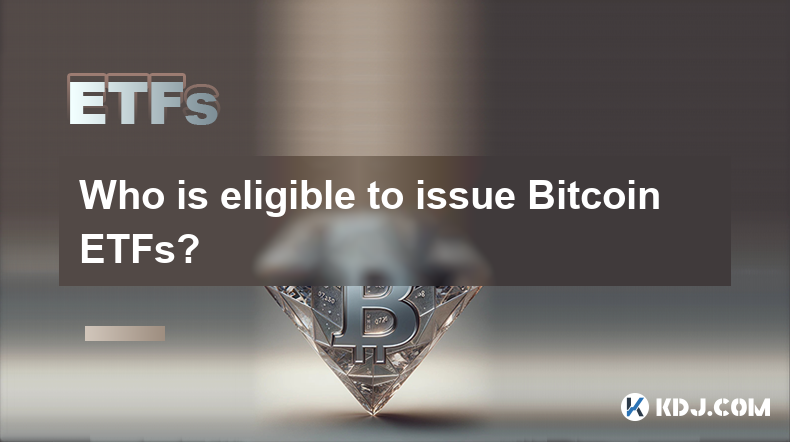
Who is eligible to issue Bitcoin ETFs?
Feb 25,2025 at 11:13am
Key Points:Only regulated financial institutions with the necessary expertise and infrastructure are eligible to issue Bitcoin ETFs.The Securities and Exchange Commission (SEC) has not yet approved any spot Bitcoin ETFs, but has approved several futures-based ETFs.Applicants must meet stringent requirements, including having a strong track record and su...
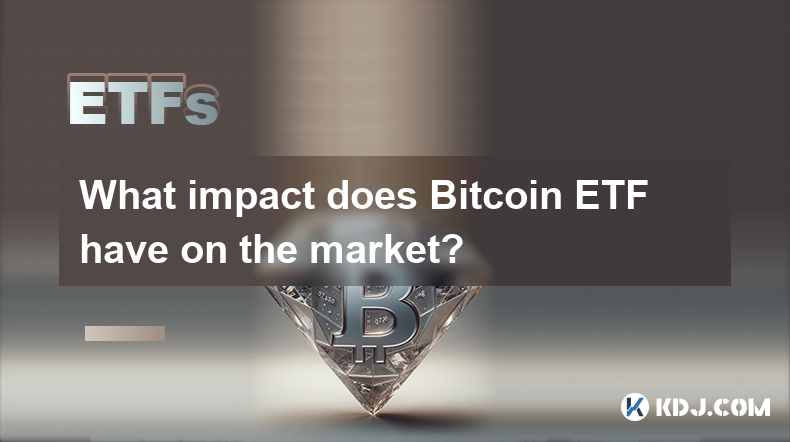
What impact does Bitcoin ETF have on the market?
Feb 25,2025 at 11:37am
Key Points:Introduction to Bitcoin ETFs and their role in the cryptocurrency marketHistorical development and performance of Bitcoin ETFsPotential benefits of Bitcoin ETFs for investors and the marketRisks and limitations associated with Bitcoin ETFsRegulatory considerations and their impact on Bitcoin ETFsArticle:Introduction to Bitcoin ETFsBitcoin exc...
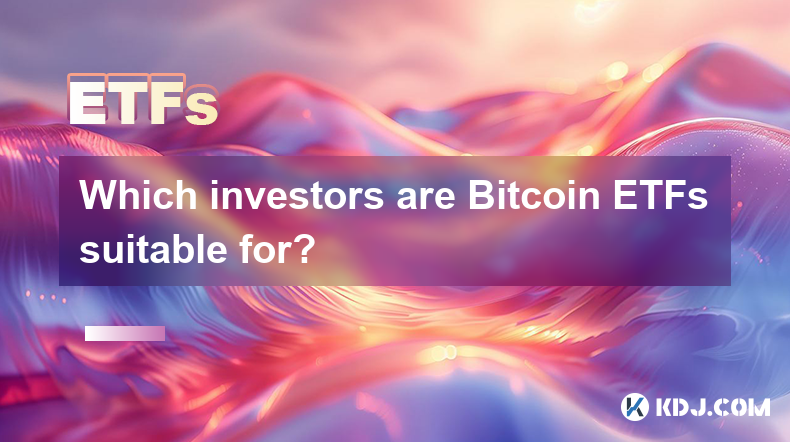
Which investors are Bitcoin ETFs suitable for?
Feb 27,2025 at 04:01pm
Key Points:Understanding Bitcoin ETFsBenefits of Bitcoin ETFsSuitability of Bitcoin ETFs for Different InvestorsAssessing Risk Tolerance and Investment GoalsConsidering Short-Term and Long-Term StrategiesExamining Tax ImplicationsSeeking Professional AdviceUnderstanding Bitcoin ETFsBitcoin exchange-traded funds (ETFs) are investment vehicles that track ...
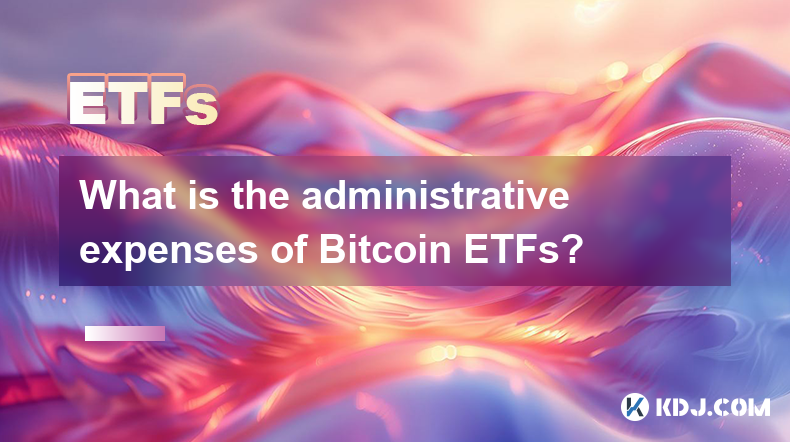
What is the administrative expenses of Bitcoin ETFs?
Feb 26,2025 at 12:24am
Key Points:Administrative expenses are a crucial factor to consider when evaluating Bitcoin ETFs.These expenses can significantly impact the performance of the fund and ultimately the investor's returns.Understanding the various components of administrative expenses is essential for informed decision-making.Comparing administrative expenses across diffe...
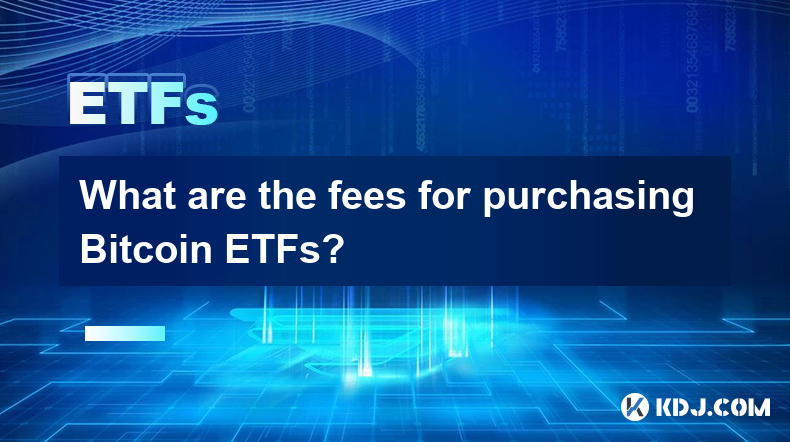
What are the fees for purchasing Bitcoin ETFs?
Feb 27,2025 at 07:13pm
Key Points:Bitcoin exchange-traded funds (ETFs) are a cost-effective and regulated way to gain exposure to Bitcoin.Fees associated with Bitcoin ETF purchases vary depending on the platform, trading volume, and account type.It is essential to evaluate fee structures carefully to optimize investment returns.Fees Associated with Purchasing Bitcoin ETFs1. B...

What role does SEC play in Bitcoin ETF approval?
Feb 25,2025 at 06:48am
Key Points:SEC's Role in Bitcoin ETF Approval ProcessHistorical Efforts to Establish a Bitcoin ETFSEC's Criteria for Bitcoin ETF ApprovalPotential Impact of a Bitcoin ETF on the Cryptocurrency MarketTimeline and Outlook for Bitcoin ETF ApprovalArticle:SEC Play in Bitcoin ETF ApprovalThe United States Securities and Exchange Commission (SEC) plays a crit...

Who is eligible to issue Bitcoin ETFs?
Feb 25,2025 at 11:13am
Key Points:Only regulated financial institutions with the necessary expertise and infrastructure are eligible to issue Bitcoin ETFs.The Securities and Exchange Commission (SEC) has not yet approved any spot Bitcoin ETFs, but has approved several futures-based ETFs.Applicants must meet stringent requirements, including having a strong track record and su...

What impact does Bitcoin ETF have on the market?
Feb 25,2025 at 11:37am
Key Points:Introduction to Bitcoin ETFs and their role in the cryptocurrency marketHistorical development and performance of Bitcoin ETFsPotential benefits of Bitcoin ETFs for investors and the marketRisks and limitations associated with Bitcoin ETFsRegulatory considerations and their impact on Bitcoin ETFsArticle:Introduction to Bitcoin ETFsBitcoin exc...

Which investors are Bitcoin ETFs suitable for?
Feb 27,2025 at 04:01pm
Key Points:Understanding Bitcoin ETFsBenefits of Bitcoin ETFsSuitability of Bitcoin ETFs for Different InvestorsAssessing Risk Tolerance and Investment GoalsConsidering Short-Term and Long-Term StrategiesExamining Tax ImplicationsSeeking Professional AdviceUnderstanding Bitcoin ETFsBitcoin exchange-traded funds (ETFs) are investment vehicles that track ...

What is the administrative expenses of Bitcoin ETFs?
Feb 26,2025 at 12:24am
Key Points:Administrative expenses are a crucial factor to consider when evaluating Bitcoin ETFs.These expenses can significantly impact the performance of the fund and ultimately the investor's returns.Understanding the various components of administrative expenses is essential for informed decision-making.Comparing administrative expenses across diffe...

What are the fees for purchasing Bitcoin ETFs?
Feb 27,2025 at 07:13pm
Key Points:Bitcoin exchange-traded funds (ETFs) are a cost-effective and regulated way to gain exposure to Bitcoin.Fees associated with Bitcoin ETF purchases vary depending on the platform, trading volume, and account type.It is essential to evaluate fee structures carefully to optimize investment returns.Fees Associated with Purchasing Bitcoin ETFs1. B...
See all articles























































































